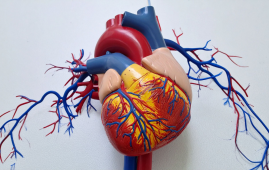

Elika Bergelson, an associate professor of psychology at Harvard, researches how newborns and infants learn language from their surroundings. The developmental psychologist works specifically to disentangle the numerous ideas that explain the onset and eventual mastery of language comprehension and production.
Bergelson’s most recent article, published in the Proceedings of the National Academy of Sciences this month, demonstrates a more worldwide approach to formulating and testing such theories.
The report, co-authored by Alejandrina Cristia of École Normale Supérieure, PSL University, and 11 others, is based on an extraordinarily large sample of two- to 48-month-olds. A day’s worth of audio recordings recorded the babbling and baby talk of 1,001 youngsters from 12 different nations and 43 different languages. Machine learning was used to finish the analysis.
Age, clinical characteristics such as infancy or dyslexia, and the amount of speech infant get from their surroundings are found to be the most important determinants of language development. In contrast to prior study, no impacts associated to gender, multilingualism, or socioeconomic status were discovered.
The study was able to simultaneously consider many variables that are usually looked at separately while also considering how big their effects were. “Notably, it wasn’t just child factors like age or risk for language delay that mattered, but a key environmental factor too: how much speech infants heard from adults,” Bergelson said. “For every 100 adult vocalizations infants heard per hour, they produced 27 more vocalizations themselves, and this effect grew with age.”
The work also touches on well-worn critiques of low-income parents and caregivers. “There’s been much debate and discussion in the literature in recent years about how socioeconomic status does or doesn’t link to language input and language output,” noted Bergelson. “We looked in many, many, many different ways … In no form did we ever find evidence that moms with more education had kids who produced more speech in these tens of thousands of hours of recordings from daily life?”
more recommended stories
 Fat-Free Mass and Brain Outcomes in Preterm Babies
Fat-Free Mass and Brain Outcomes in Preterm BabiesEarly Fat-Free Mass May Hold the.
 How Hormones Shape Dopamine-Driven Learning
How Hormones Shape Dopamine-Driven LearningNYU Study on Hormones and Cognitive.
 Protein Pair Guides Chromosome Alignment in Mitosis
Protein Pair Guides Chromosome Alignment in MitosisKey Points A joint research team.
 Intensive mind-body retreat rapidly alters brain function
Intensive mind-body retreat rapidly alters brain functionAn intensive mind-body retreat combining meditation,.
 Cholesterol-Lowering Drugs May Help Reduce PFAS Levels
Cholesterol-Lowering Drugs May Help Reduce PFAS LevelsPer- and polyfluoroalkyl substances (PFAS) continue.
 Citrus and Grape Compounds Help Prevent Type 2 Diabetes
Citrus and Grape Compounds Help Prevent Type 2 DiabetesA new clinical trial highlights the.
 Personalized Pain Care Transforms Parkinson’s Treatment
Personalized Pain Care Transforms Parkinson’s TreatmentNew UniSA research underscores the urgent.
 Genetic Diversity Explains Obesity Risk Differences
Genetic Diversity Explains Obesity Risk DifferencesCross-ancestry Study Identifies Novel Obesity Genes.
 Meniscal Tear and OA Pain Improved by Home Exercise
Meniscal Tear and OA Pain Improved by Home ExerciseHome Exercise Proves Effective for Knee.
 AI ECG Model Outperforms Standard STEMI Triage
AI ECG Model Outperforms Standard STEMI TriageNovel AI ECG Model Outperforms Standard.

Leave a Comment